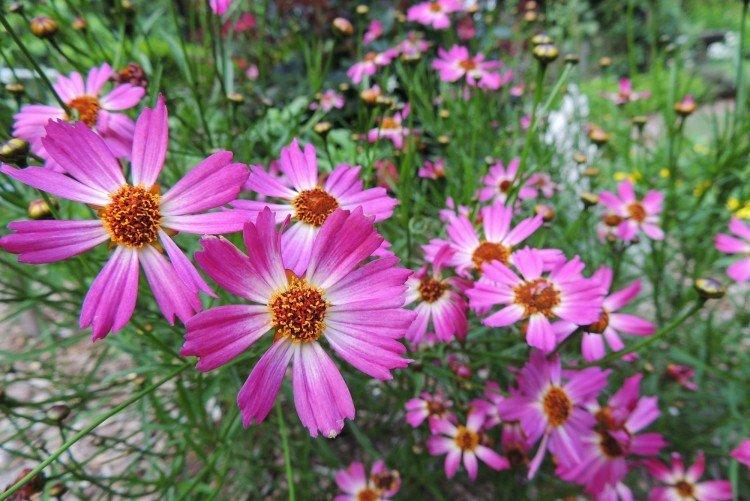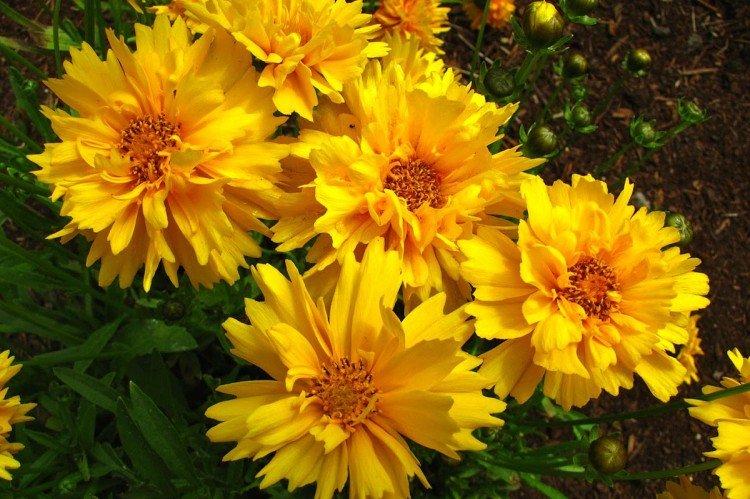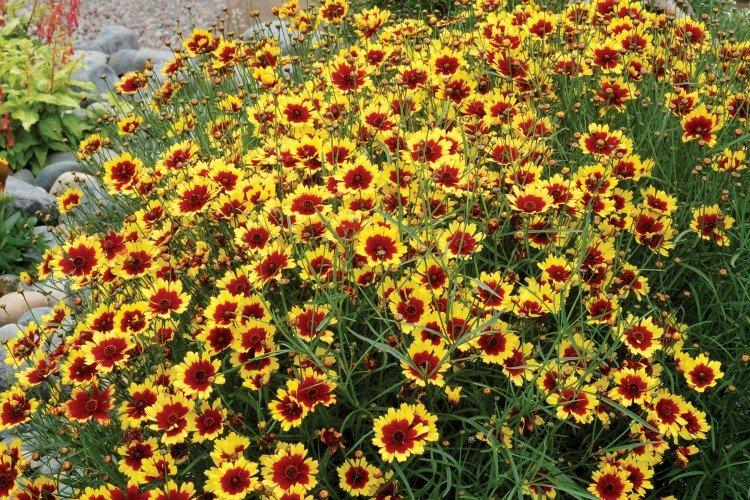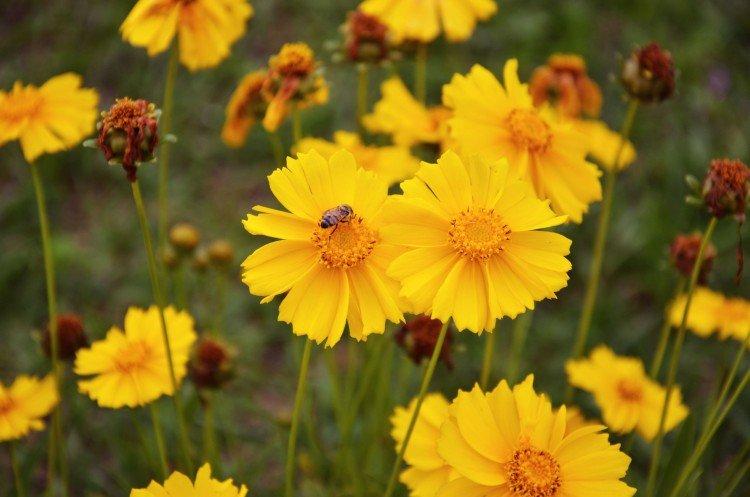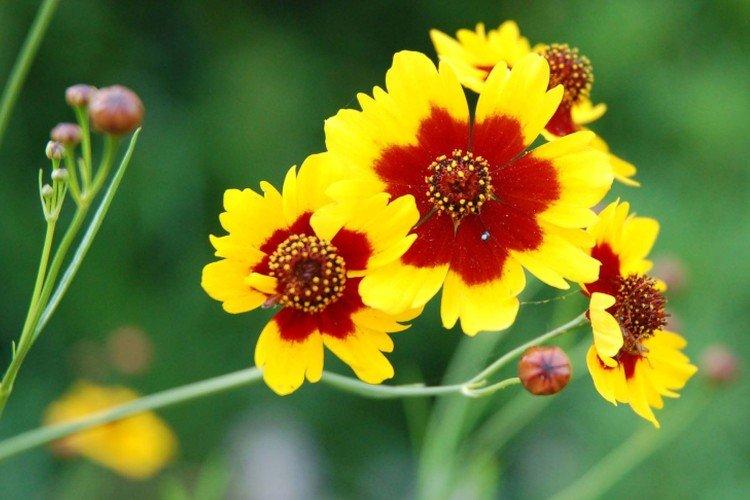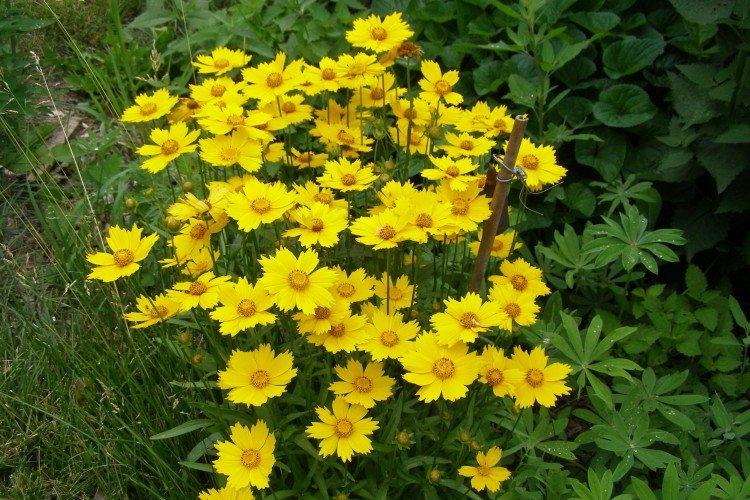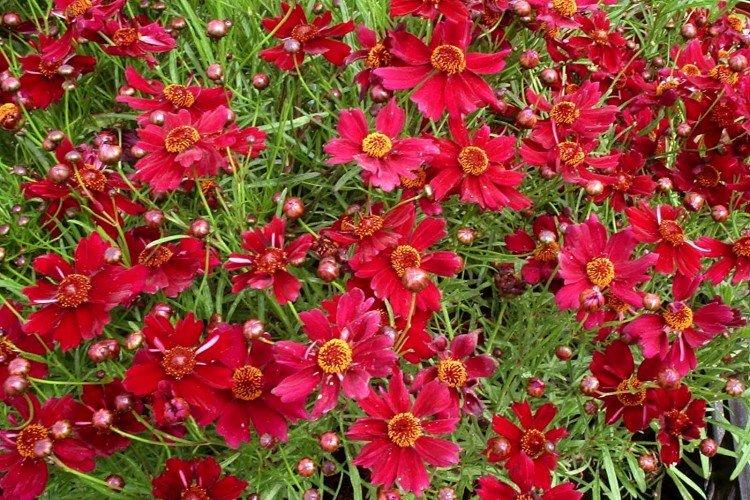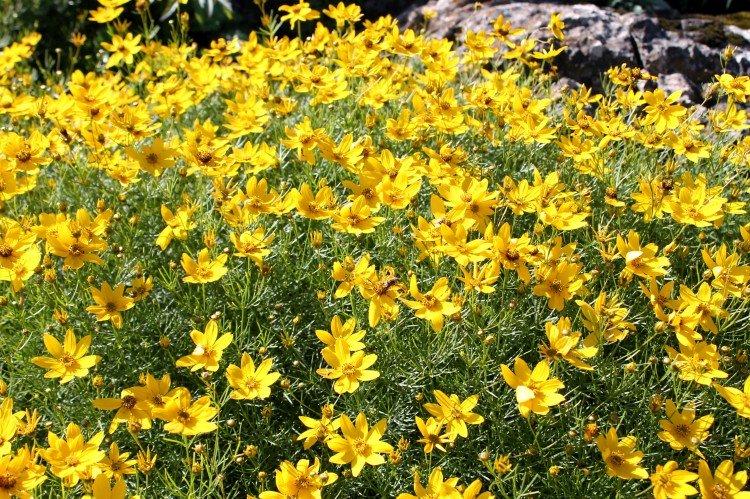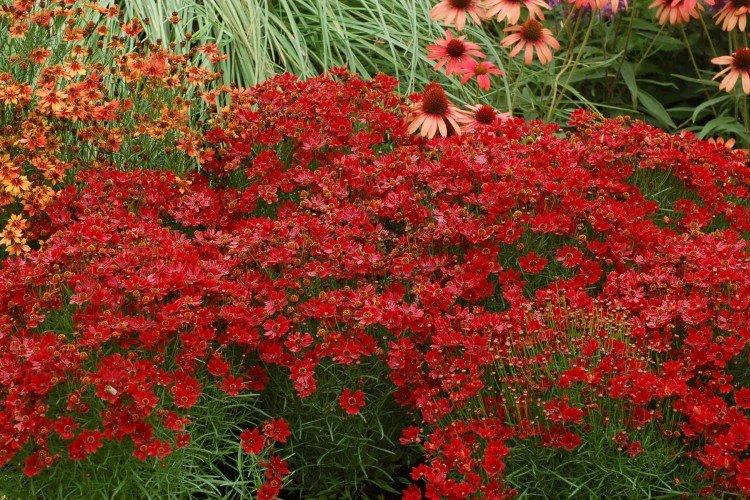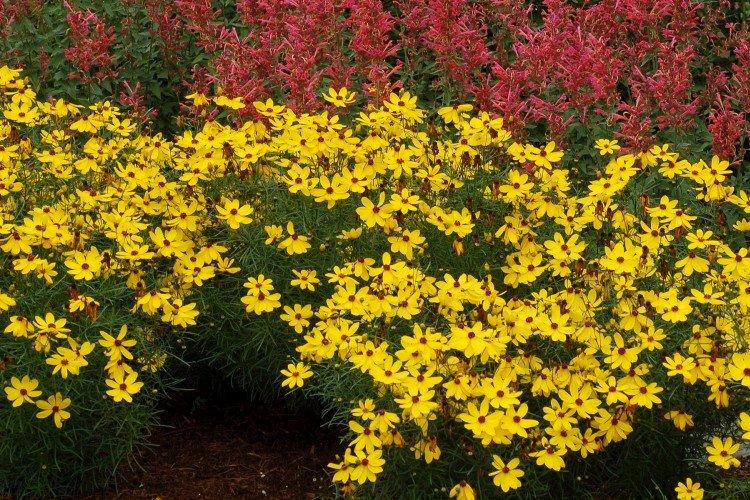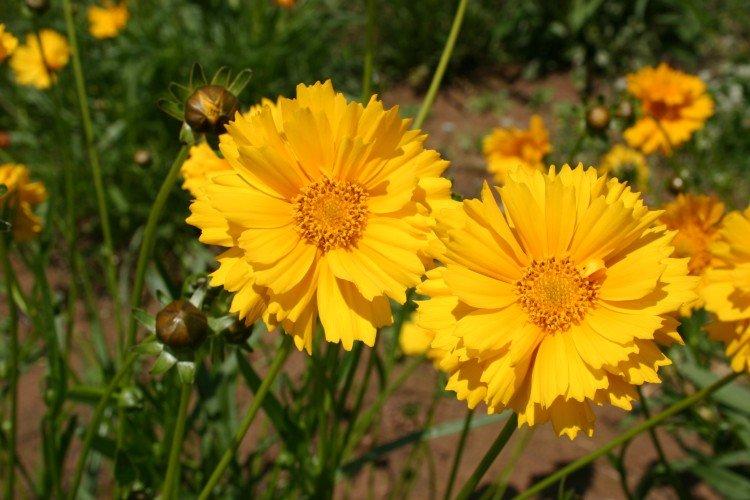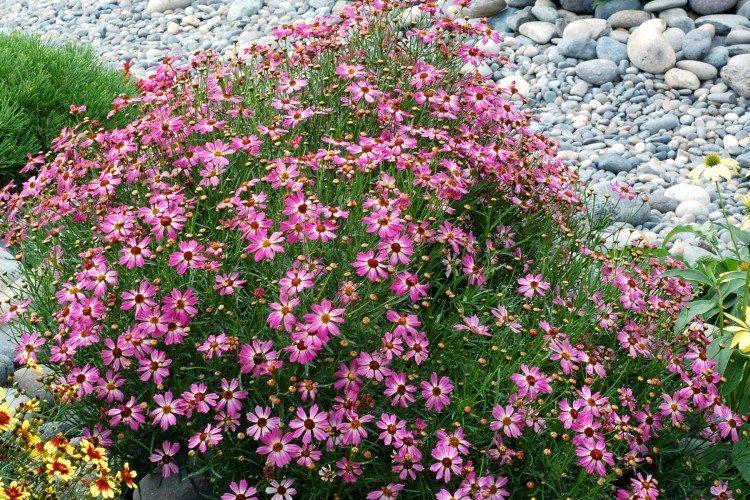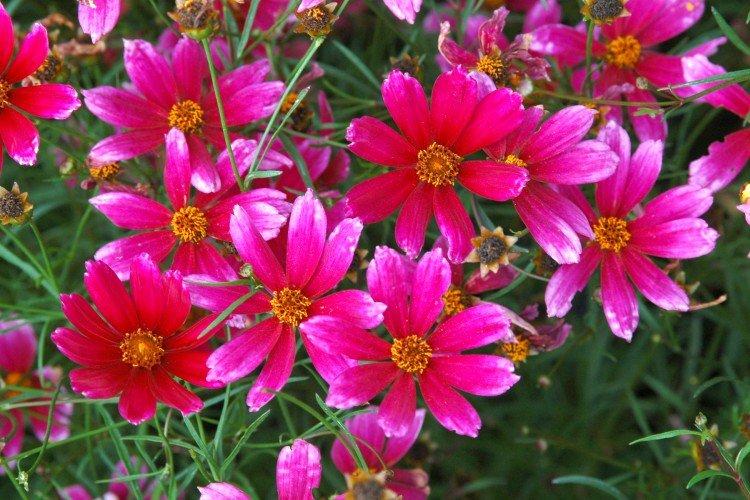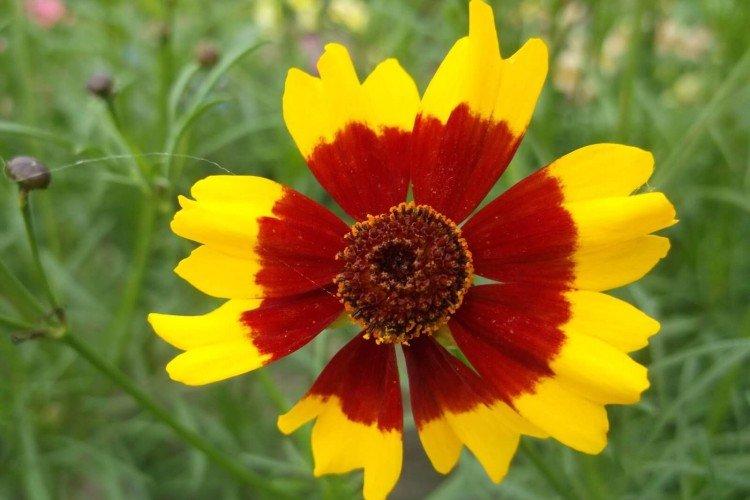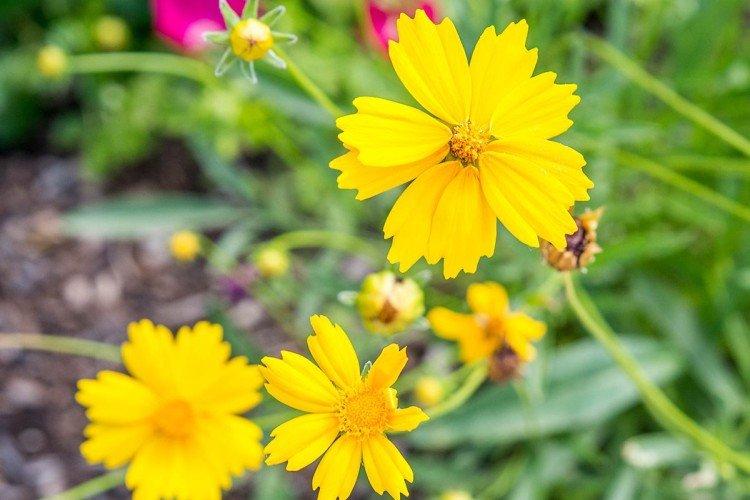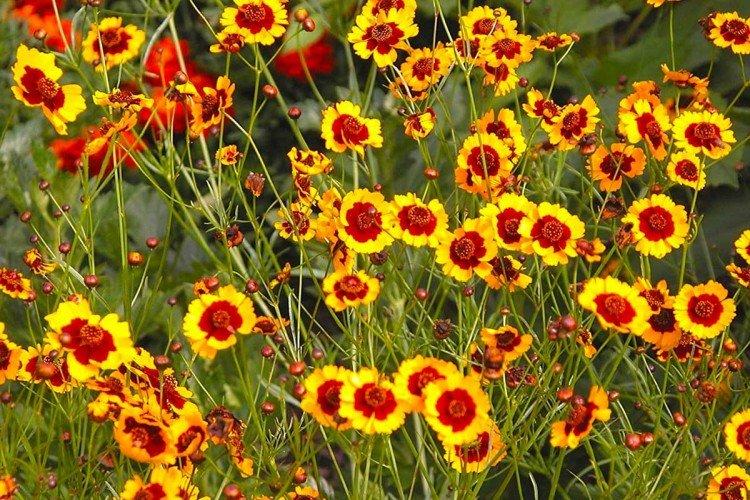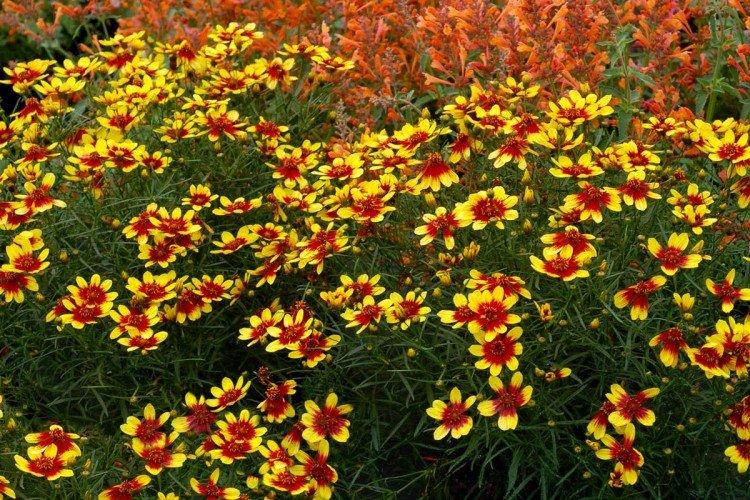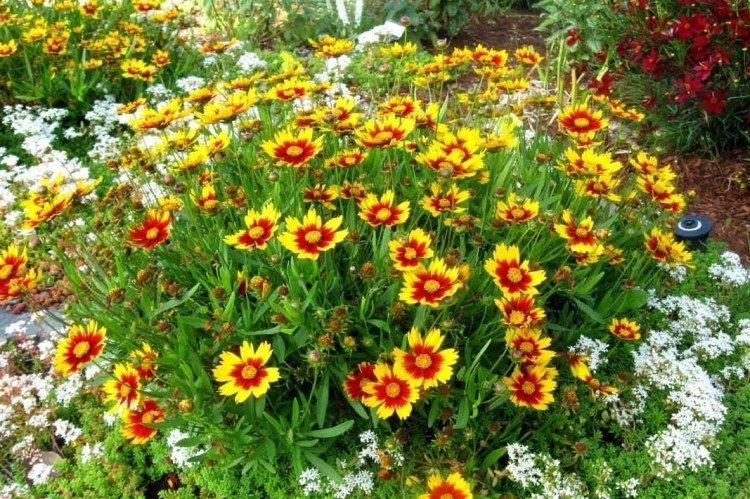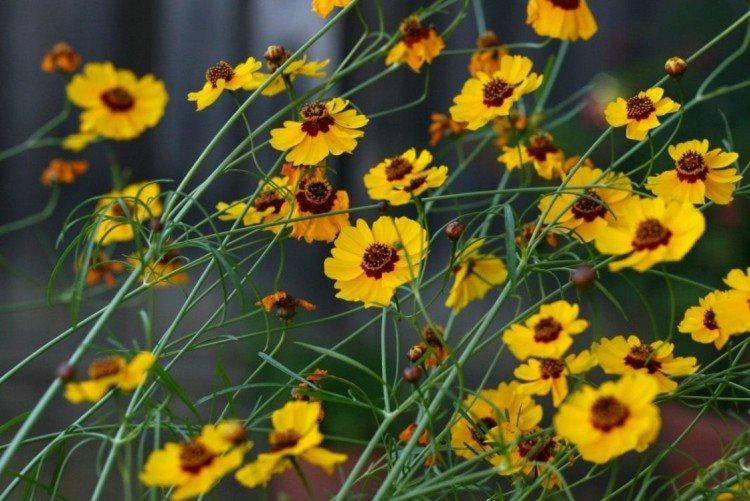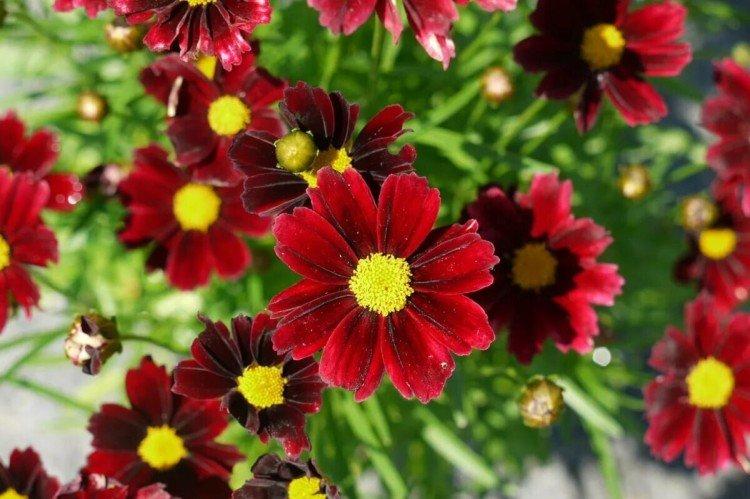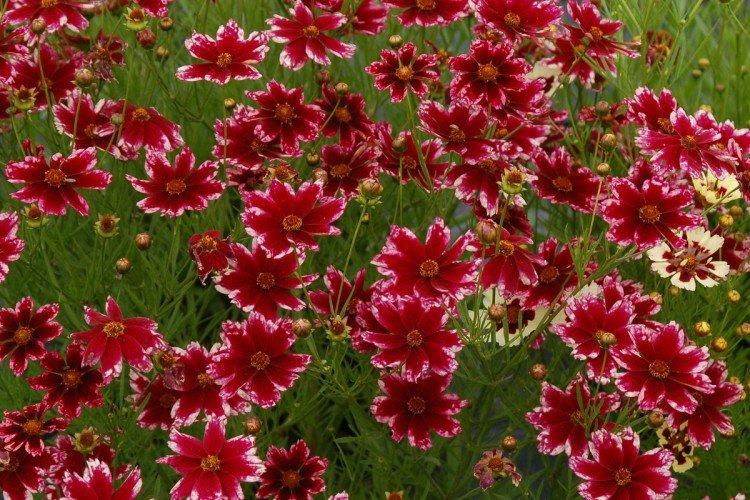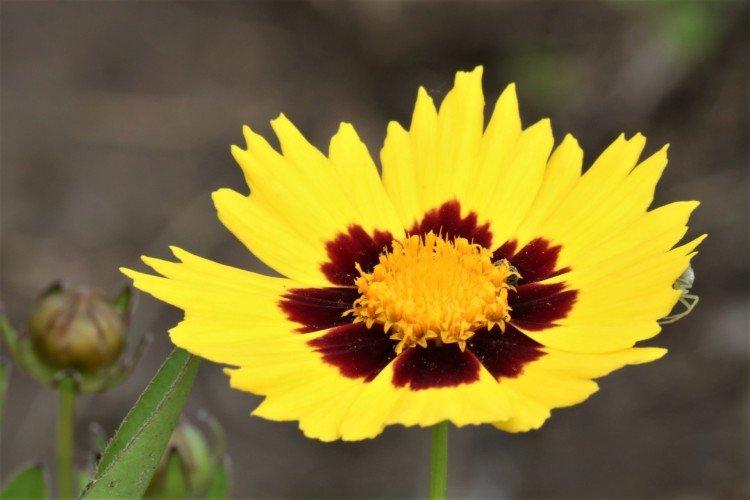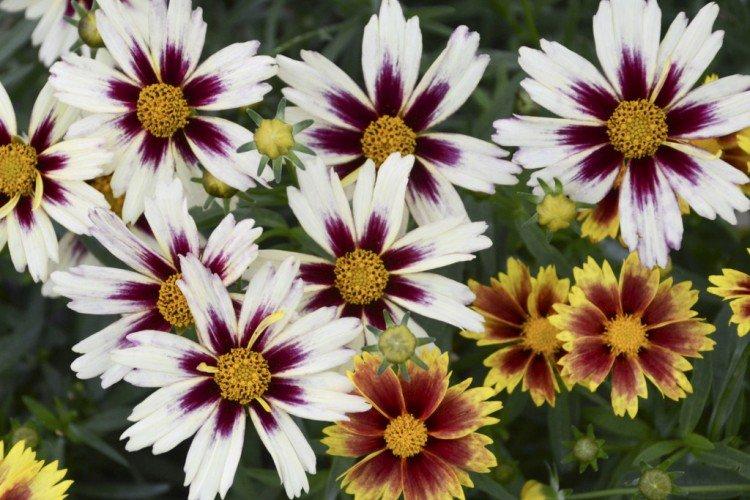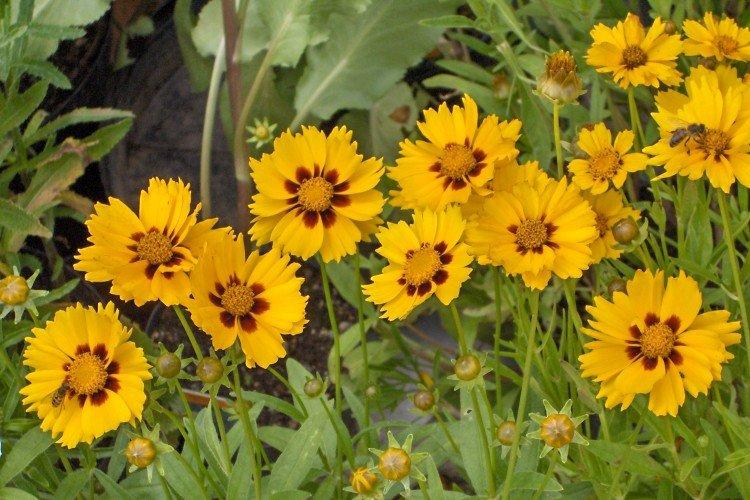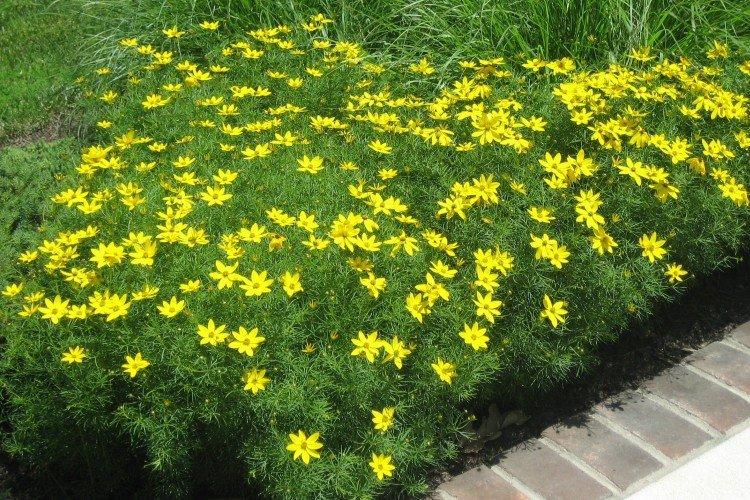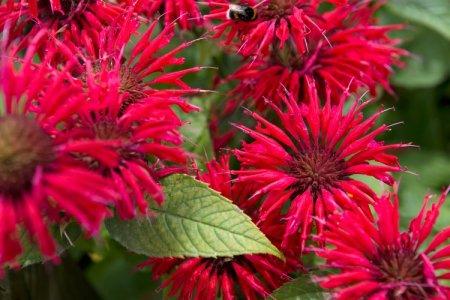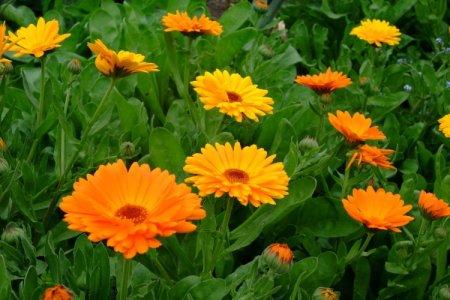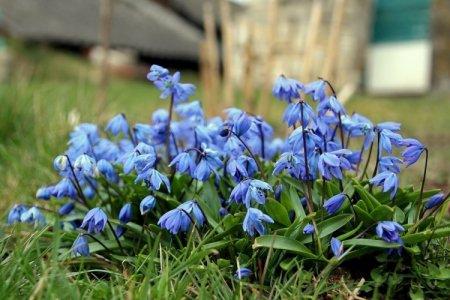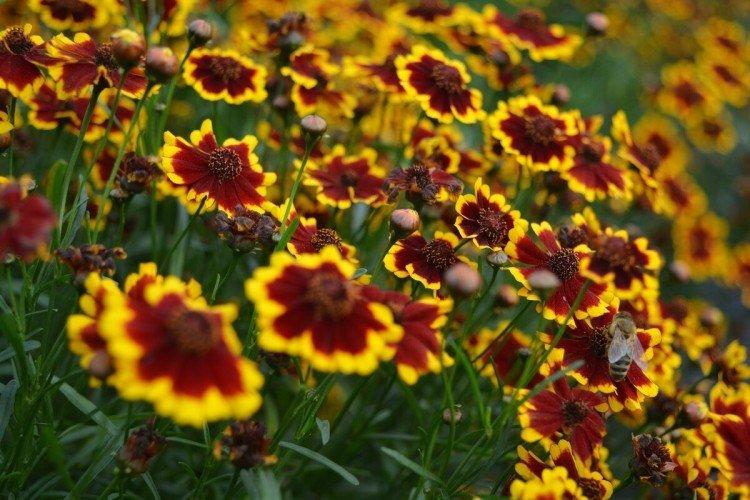
Charming yellow daisies with a convex spherical center - this is it, coreopsis. It blooms with such a bright and lush carpet that it is simply impossible to resist. Especially good are the flower beds, in which several simple and terry varieties are mixed at once. Let's tell you more!
general information
Coreopsis is another herbaceous representative of the Asteraceae family, which is easy to guess from the characteristic shape of the inflorescences-baskets. He came to us from different regions of South and North America, but has long been adapted and is now growing all over the world.
Coreopsis has thin branchy shoots up to 90 cm high, which resemble openwork ligature. There are more compact and taller varieties. Narrow leaves are mainly collected from below, but single yellow buds up to 6 cm in diameter bloom from above. Flowering begins in the first half of summer and continues until frost.
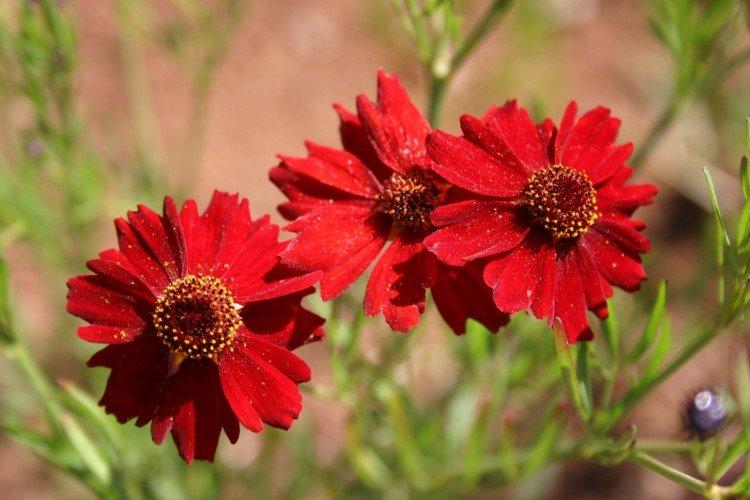
Types of coreopsis
There are dozens of coreopsis species, including annuals and perennials. Let's start with those that are most often grown in a garden in Russia!
Large-flowered coreopsis
Decorative classics with powerful straight peduncles and abundant flowering. This species has been cultivated for almost two centuries, so it pleases with a variety of common and terry varieties.
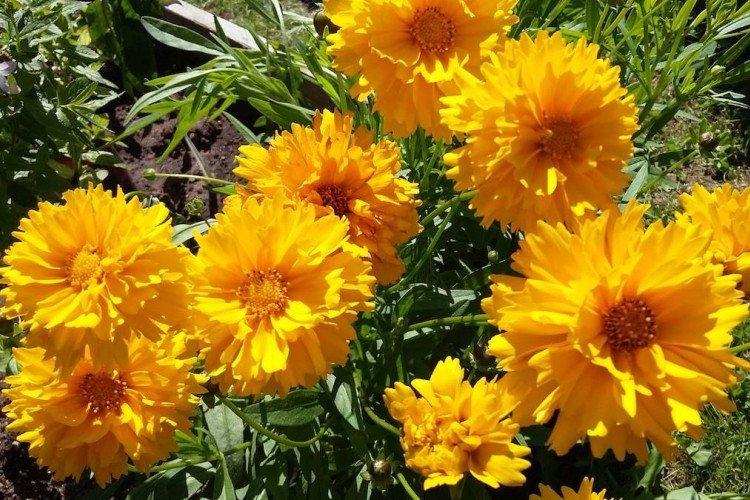
Coreopsis Drummond
It is a medium-sized, but very branching species up to 60 cm high with feathery leaves. The diameter of the inflorescences reaches 5 cm, and brownish spots are clearly visible on the yellow petals at the base.
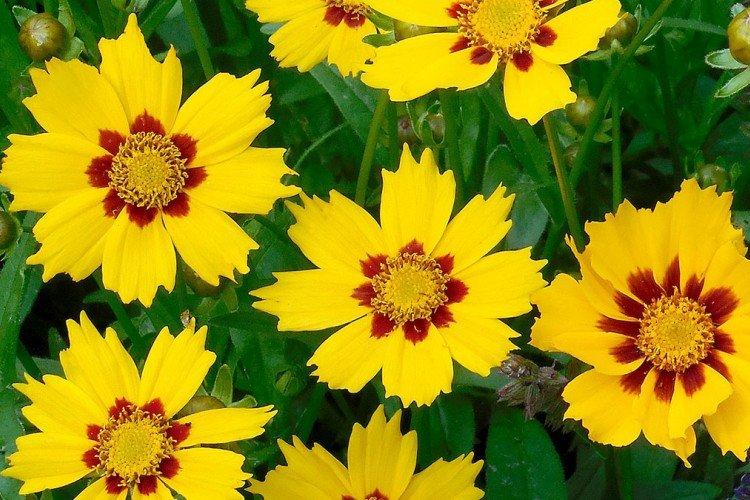
Whorled coreopsis
The leaves of this branchy perennial resemble long needles, which makes the shoots look even more unusual. Small yellow baskets resemble stars that cover the entire bush very densely.
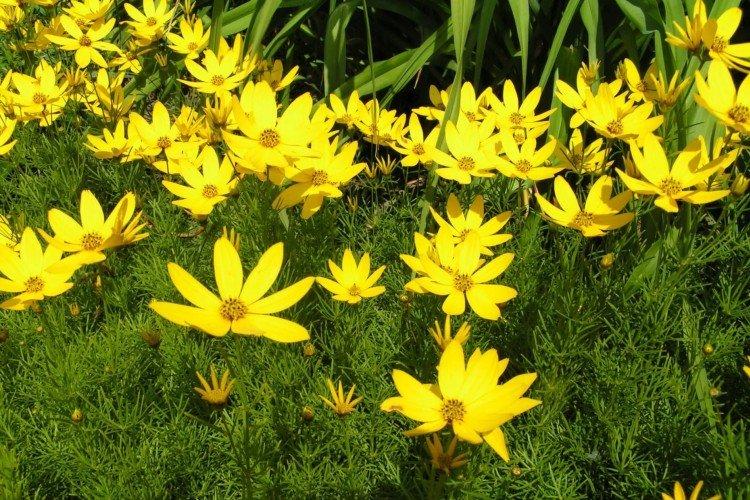
Ferulele-leaved coreopsis
This is an annual that forms a neat, rounded bush with a diameter of 50-90 cm. Ferulele-shaped coreopsis has very strong, powerful stems that begin to branch immediately from the base.
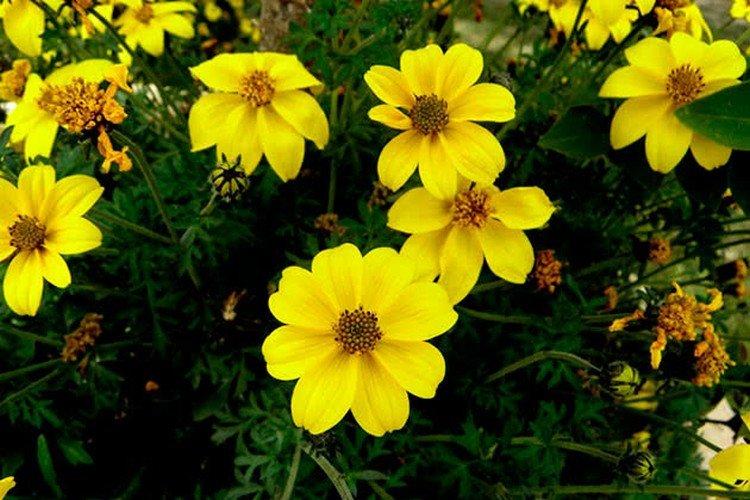
Lanceolate coreopsis
It got its name for the characteristic lanceolate shape of the leaves. He has large inflorescences up to 6 cm in diameter, and a lot of varieties and hybrids bred for almost 300 years.
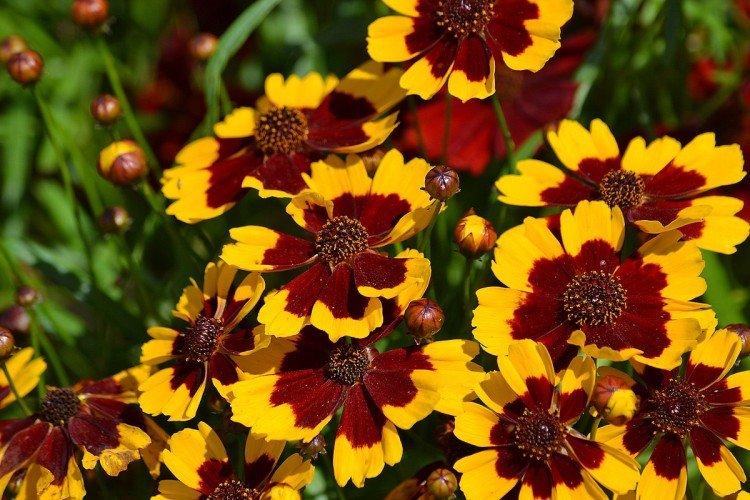
Dye coreopsis
You have a large selection of varieties at your disposal: from babies up to 30 cm to quite tall meter flowers. But the baskets are most often small - up to 3.5 cm in diameter, with a brown center and velvety yellow petals.
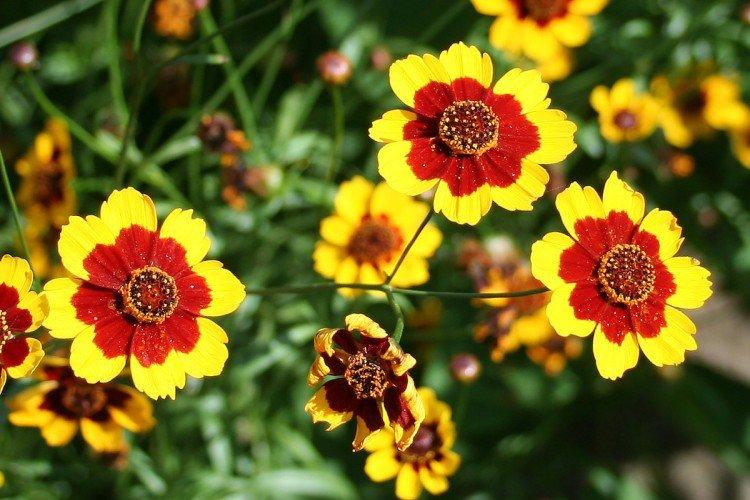
Pink coreopsis
Yellow varieties are the most popular and varied, but not the only ones. Pink coreopsis is quite miniature - up to 40 cm and with flowers up to 2 cm in diameter.
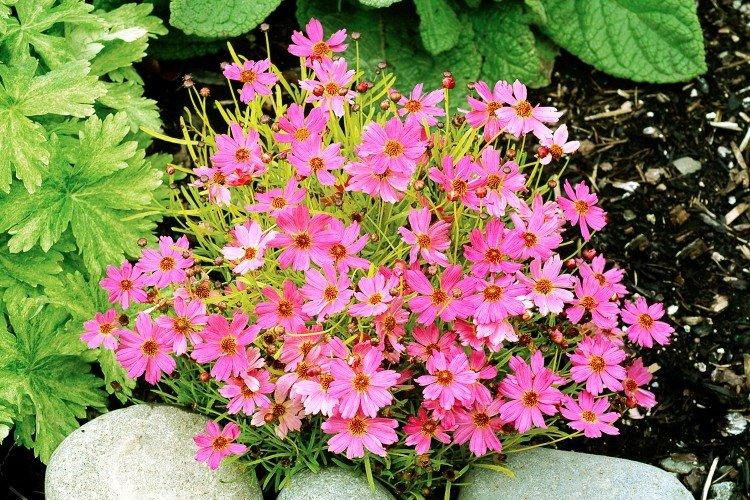
Coreopsis care
Coreopsis is a light-loving flower, resistant to drought and frost. It is easy to grow even from seed and is not a problem at all.
Temperature
In the middle lane, coreopsis equally easily tolerates both summer heat and winter frosts, so it does not need any special preparation and protection.
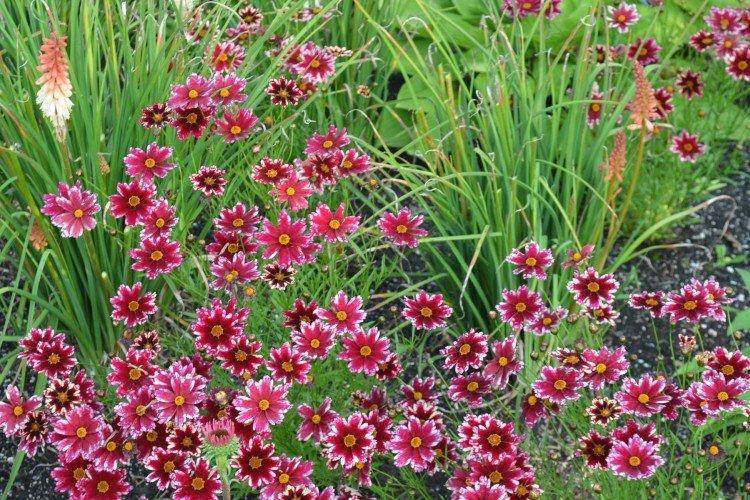
Lighting
Most coreopsis varieties prefer bright sunlight. And only some of them get burns in the sun and grow better in partial shade.
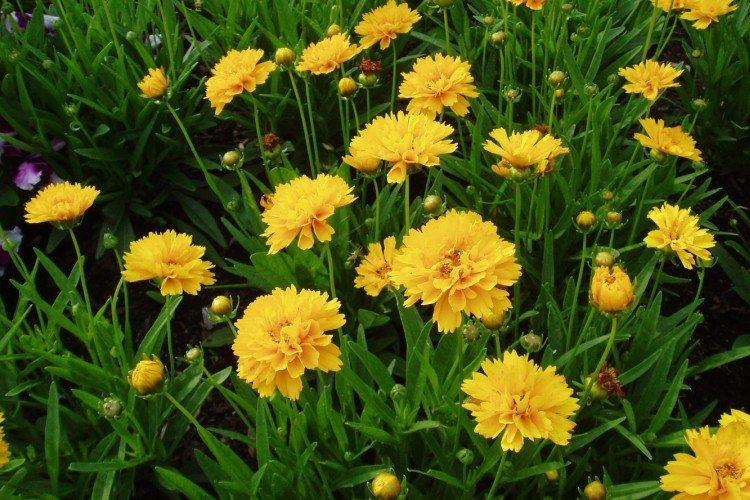
Watering
During planting and rooting of seedlings, regular, but moderate watering is needed. When they get stronger, it is gradually reduced. Adult coreopsis should only be watered during prolonged drought.
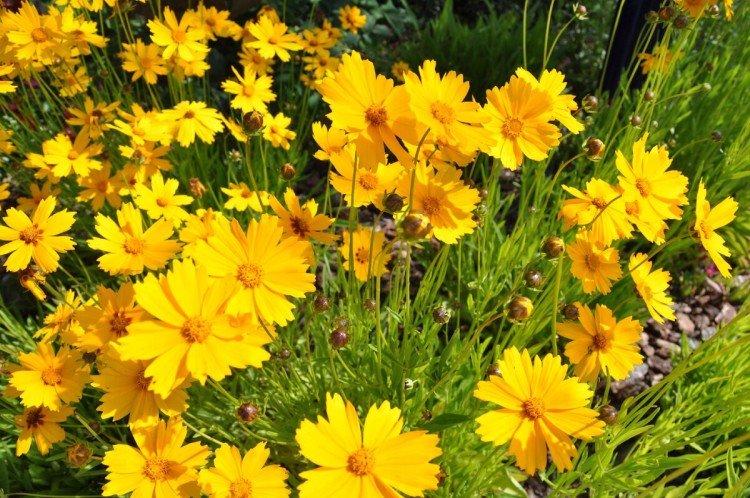
The soil
Moderation in everything is important for coreopsis, so he prefers neutral soil of medium fertility, and the rest is details. Of course, the soil should be light and loose enough to minimize the risk of moisture stagnation.
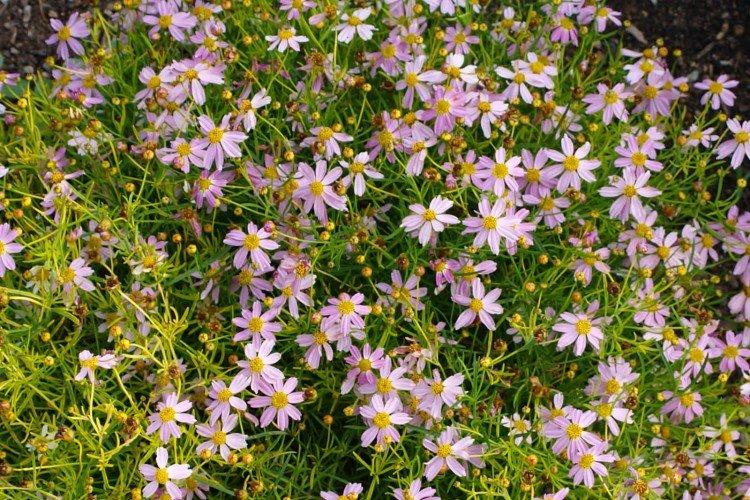
Fertilizers and feeding
Coreopsis grows no worse than a weed, so it does not need additional fertilizing even during flowering. Only on very poor soil can you occasionally apply mineral fertilizers when watering.
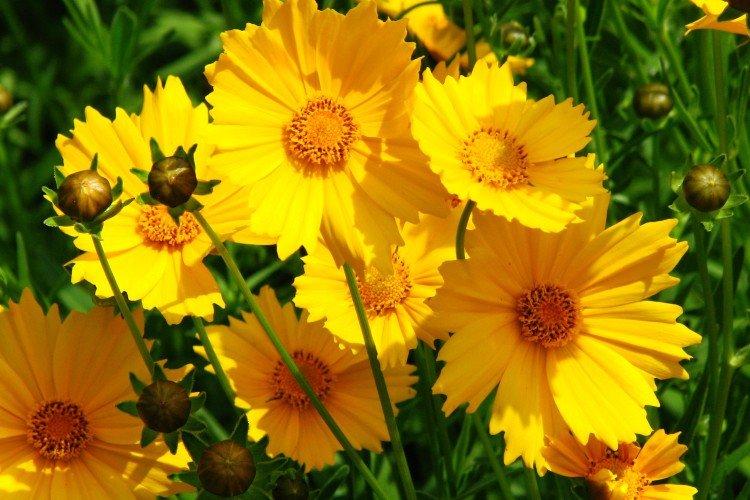
Wintering
Annual varieties are dug up and removed for the winter.In perennials, the entire ground part is cut off, that's all. Additional leaf cover is needed only in the case of a very frosty and completely snowless winter.
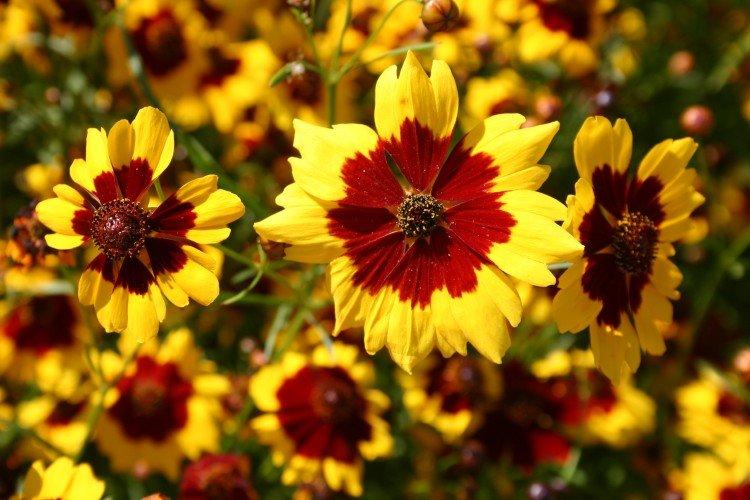
Planting and breeding
Annual varieties are sown in May directly into open ground, and perennials are more convenient to germinate with seedlings in early March. Spread the seeds evenly over damp soil and leave warm and in the sun under a film. Air the planting daily, and within 1.5 weeks, friendly shoots will appear.
As several leaves are formed, seedlings are planted in cups, and by the end of May, begin to gradually harden them outdoors and transplant them into open ground. Saplings are planted in holes with a step of 30 cm.

Pest and disease control
Most often, coreopsis suffers from different types of fungus, and there are several reasons for this. It has high humidity, prolonged precipitation and too dense planting. In any case, you need to cut off all damaged parts of the plant, and treat the rest with fungicides. In case of severe damage, the painful flower should be removed completely.
If the peduncles of the coreopsis fold into suspicious tubules, get rid of these specimens along with the root as soon as possible. It is a virus, and it cannot be cured, but it spreads.
Aphids willingly settle on coreopsis, and when there are a lot of them, folk methods no longer save. We advise you not to allow the situation to worsen and immediately use insecticides. But large beetles will first have to be collected by hand.
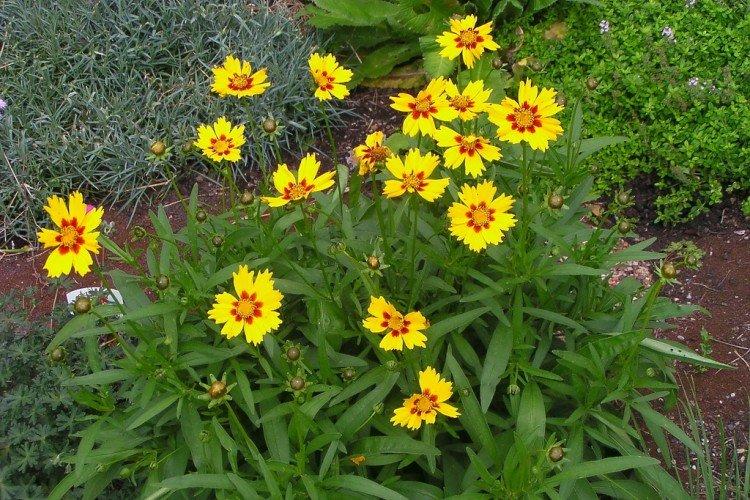
Coreopsis - photo
Coreopsis grows very quickly and gladly pleases with its beauty. Just look at how impressive it looks on the site!
